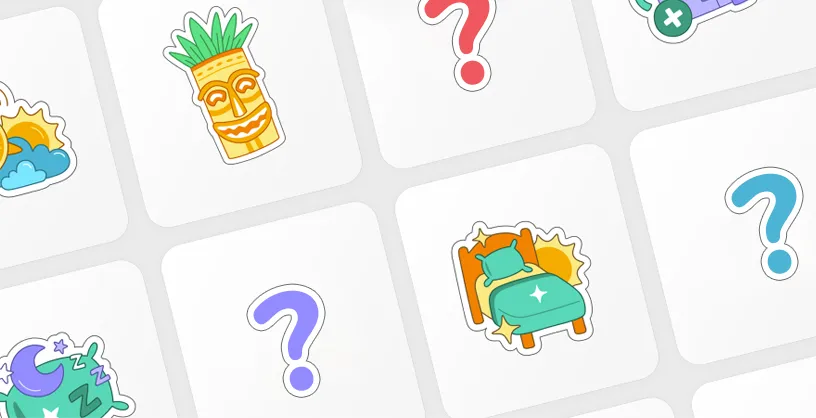
If you're anything like me, the word 'creativity' stirs up ideas of art, painting, writing, and music. These are certainly expressions of creativity. According to the Oxford dictionary, however, creativity is also 'the use of imagination or original ideas to create something.' It is innovation, problem-solving, and ingenuity. It's something we use in our everyday lives and at work. Creatives are not just artists and musicians, but lawyers, scientists, and engineers.
Unfortunately, our creative thinking is often drowned out by the daily hustle and bustle, jam-packed schedules, and school runs. In order to tap into our creativity, we need to calm our minds and mute the noise around us, and the thoughts inside our heads. This process is commonly referred to as meditation, and the latest scientific research shows that just ten minutes of mindfulness and mediation enhances the skills necessary for creativity and problem solving to take place.
Meditation and the Brain
The area in our brain responsible for creative thinking is the neocortex. The neocortex is made up of six layers and makes up half of the volume of the brain. It is the most evolved part of our mammalian brain and facilitates higher brain functioning such as decision making, attention, and the processing of associative information.
In order for the neocortex to effectively function, other areas of the brain need to be 'silenced'. The limbic system, which processes emotions and motivation, can easily become activated during times of emotional instability and stress. When this happens, our brains become busy, and our neocortex does not fire effectively. During stress, our 'reptilian brain' is also triggered. This region is responsible for survival, the 'fight or flight' reflex, and obstructs the functioning of the neocortex.
So how do we silence the limbic system and reptilian brain and activate the neocortex? The answer, according to several recent studies, is meditation.
Meditation Stimulates Creativity
Danny Penman, qualified meditation teacher and author of Mindfulness for Creativity, explains that mindfulness produces both convergent and divergent thinking.
Convergent thinking is 'rational, deductive and focused' and usually linked to existing knowledge. The solution to a problem merely needs to be 'accessed'. Divergent thinking is 'spontaneous and free flowing' and is linked to unexpected associations and epiphanies -- those 'aha!' moments. Both ways of thinking are necessary for creativity.
Research shows that mindfulness and meditation are mostly linked to divergent thinking, but other specific types of meditation are related to convergent thinking. In a 2012 study by Lorenza Colzato, a cognitive psychologist, and her team, had research participants practice two forms of meditation. The first was 'open monitoring' which involves focusing our awareness on the present moment and present thoughts, feelings, and sensations. The second was 'focused attention' which focuses intently on a specific object, often our breath, and drowns out surrounding distractions and stimuli. After each meditation session, participants took part in cognitive skills testing.
Results showed that open-monitoring meditation instigated divergent thinking while focused attention meditation stimulated convergent thinking. Most meditation styles, which will be discussed below, include a combination of both. Simply put, these studies show that mindfulness meditation, when done correctly, can stimulate creativity, focus, and problem-solving.
How to Meditate:
Thankfully, in order to tap into the benefits of meditation, you don't need to spend hours a day on your yoga mat or spend vast amounts of money on exotic retreats and courses. Research shows that just ten to twelve minutes of meditation are enough to boost creativity and innovation. It also helps relieve stress and instill a positive frame of mind.
There are several free apps, videos, and courses that can be found online offering various types of guided meditation. This is a great starting point if you are new to meditation.
If you'd like to get started right away. Here is a very simple and easy-to-follow routine:
- Sit down. Find a comfortable spot that is calm and quiet.
- Set a timer. 5 Minutes is a good starting point.
- Close your eyes.
- Notice your body and your posture.
- Feel your breath. The movement of your chest and belly with each inhalation and exhalation.
- Notice when your mind begins to wander and be kind when it does.
- Bring your attention back to your breathing.
- Close with kindness once your timer goes off. Ensure that any negative thoughts or feelings that you brought into the session are released: "I see my feelings, and I am grateful for them, but now I move forward with grace."
It's as simple as that. This means it's easy, and extremely beneficial, for children too.
Kids Meditation
For children, meditation offers both academic and personal advantages. As described above, it can assist in improving focus and attention and as a result, allows children to study more efficiently for tests and exams, and ultimately improve their grades. It also improves working memory capacity and helps children develop an awareness of their learning strategies.
More than that though, it helps with self-regulation and emotional balance. This can be extremely beneficial for adolescents navigating the rollercoaster of puberty. Similarly, it can bring calm and focus to children dealing with learning difficulties such as ADHD.
A 2019 study showed that high-school students who practiced meditation had greater attention spans than those who did not. Another study led by Patricia Broderick, Assistant Research Professor at Penn State University, highlighted the effect of meditation and mindfulness on the well-being of adolescents. The participants of the study who practiced meditation exhibited increased calmness, emotional regulation, and general wellbeing.
At Coachbit we guide our students through basic mindful breath practices which teach them to become present, improve their focus and cultivate joy. We also introduce meditative and gratitude writing practices.
For older students, a meditation routine similar to the one outlined above is certainly suitable.
We do suggest, however, that a great place to start with your child is by introducing short meditative practices throughout the day. These can include:
1. Short breathing practices, encouraging your child to focus on their breathing. You could even make it fun. On their inhale tell them to pretend they are smelling something delicious, like brownies baking in the oven. On their exhale they can pretend to blow out candles on a birthday cake. Another option is to let them pretend they are blowing up a balloon.
2. Introduce a bedtime ritual to calm their minds and prepare them for sleep. Guide them through a short body scan meditation. Let them close their eyes and slowly focus on the way each of their body parts feels. From top to bottom.
3. A gratitude routine is also great before bed. Let them reflect, quietly or out loud, on the things they are grateful for in life. To narrow it down, start with what they are grateful for in their day -- their friends, their family, the ice cream they had after school. Nothing is too trivial.
4. Going for a walk in nature is a wonderful opportunity to relax and get some fresh air. Encourage some time to be spent in silence, taking in the sounds and smells around them. Later, have a conversation about what they experienced and taken in -- the sounds of birds, of passing cars, or the smell of wet grass. Fresh air and exercise will also do wonders for their well-being.
Final Thoughts
Meditation is different for everyone. By sampling different styles of meditation you will soon find what works best for you, and your child. Try and find something that is most sustainable and can be practiced daily, or several times a week. Remember to start small, make it fun and be patient when their attention strays. Practicing meditation alongside your child is a great way to model mindfulness to them and connect through the experience.
Recommended Resources
Danny Penman, Mindfulness for Creativity: Adapt, Create and Thrive in a Frantic World
How many core habits and skills is your child missing?
Take our short quiz and find out.
Take our quiz
_Z2bR53f.webp)

